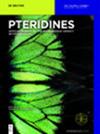Screening and bioinformatics analysis of key biomarkers in acute myocardial infarction
IF 0.9
4区 医学
Q4 BIOCHEMISTRY & MOLECULAR BIOLOGY
引用次数: 3
Abstract
Abstract Acute myocardial infarction (AMI) is the most severe manifestation of coronary artery disease. Considerable efforts have been made to elucidate its etiology and pathology, but the genetic factors that play a decisive role in the occurrence of AMI are still unclear. To determine the molecular mechanism of the occurrence and development of AMI, four microarray datasets, namely, GSE29111, GSE48060, GSE66360, and GSE97320, were downloaded from the Gene Expression Omnibus (GEO) database. We analyzed the four GEO datasets to obtain the differential expression genes (DEGs) of patients with AMI and patients with non-AMI and then performed gene ontology (GO), Kyoto Encyclopedia of Genes and Genomes (KEGG) enrichment analysis, and Protein-protein interaction (PPI) network analysis. A total of 41 DEGs were identified, including 39 upregulated genes and 2 downregulated genes. The enriched functions and pathways of the DEGs included the inflammatory response, neutrophil chemotaxis, immune response, extracellular space, positive regulation of nuclear factor kappa-light-chain-enhancer of activated B cells (NF-κB) transcription factor activity, response to lipopolysaccharide, receptor for advanced glycation end products (RAGE) receptor binding, innate immune response, defense response to bacterium, and receptor activity. The cytoHubba plug-in in Cytoscape was used to select the most significant hub gene from the PPI network. Ten hub genes were identified, and GO enrichment analysis revealed that these genes were mainly enriched in inflammatory response, neutrophil chemotaxis, immune response, RAGE receptor binding, and extracellular region. In conclusion, this study integrated four datasets and used bioinformatics methods to analyze the gene chips of AMI samples and control samples and identified DEGs that may be involved in the occurrence and development of AMI. The study provides reliable molecular biomarkers for AMI screening, diagnosis, and prognosis.急性心肌梗死关键生物标志物的筛选及生物信息学分析
摘要急性心肌梗死(AMI)是冠状动脉疾病最严重的表现。人们已经做出了相当大的努力来阐明其病因和病理,但在AMI发生中起决定性作用的遗传因素仍不清楚。为了确定AMI发生和发展的分子机制,从基因表达综合数据库(GEO)下载了四个微阵列数据集,即GSE29111、GSE48060、GSE66360和GSE97320。我们分析了四个GEO数据集,以获得AMI患者和非AMI患者的差异表达基因(DEG),然后进行了基因本体论(GO)、京都基因和基因组百科全书(KEGG)富集分析和蛋白质-蛋白质相互作用(PPI)网络分析。共鉴定出41个DEG,包括39个上调基因和2个下调基因。DEGs的丰富功能和途径包括炎症反应、中性粒细胞趋化性、免疫反应、细胞外空间、活化B细胞核因子κ轻链增强子(NF-κB)转录因子活性的正调控、对脂多糖的反应、晚期糖基化终产物受体(RAGE)受体结合、先天免疫反应,对细菌的防御反应和受体活性。Cytoscape中的cytoHubba插件用于从PPI网络中选择最重要的枢纽基因。鉴定出10个hub基因,GO富集分析显示,这些基因主要富集在炎症反应、中性粒细胞趋化性、免疫反应、RAGE受体结合和细胞外区域。总之,本研究整合了四个数据集,并使用生物信息学方法分析了AMI样本和对照样本的基因芯片,确定了可能参与AMI发生和发展的DEG。该研究为AMI的筛查、诊断和预后提供了可靠的分子生物标志物。
本文章由计算机程序翻译,如有差异,请以英文原文为准。
求助全文
约1分钟内获得全文
求助全文
来源期刊

Pteridines
生物-生化与分子生物学
CiteScore
1.20
自引率
25.00%
发文量
6
审稿时长
>12 weeks
期刊介绍:
Pteridines is an open acess international quarterly journal dealing with all aspects of pteridine research. Pteridines are heterocyclic fused ring compounds involved in a wide range of biological functions from the color on butterfly wings to cofactors in enzyme catalysis to essential vitamins. Of the pteridines, 5,6,7,8-tetrahydrobiopterin is the necessary cofactor of several aromatic amino acid monoxygenases, the nitric oxide synthases and glyceryl ether monoxygenase (GEMO). Neopterin plays an essential role in the immune system and is an important biomarker in laboratory medicine for diseases such as HIV, cardiovascular disease, malignant tumors, among others.
Topics:
-Neopterin, dihydroneopterin, monapterin-
Biopterin, tetrahydrobiopterin-
Folates, antifolates, riboflavin-
Phenylalanine, tyrosine, phenylketonuria, serotonin, adrenalin, noradrenalin, L-DOPA, dopamine, related biogenic amines-
Phenylalanine hydroxylase, tyrosine hydroxylase, tryptophan hydroxylase, nitric oxide synthases (iNOS), alkylglycerol monooxygenase (AGMO), dihydropterin reductase, sepiapterin reductase-
Homocysteine, mediators of inflammation, redox systems, iron.
 求助内容:
求助内容: 应助结果提醒方式:
应助结果提醒方式:


